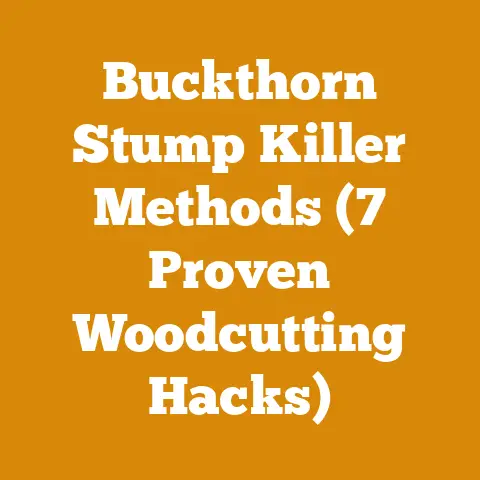Handmade Xmas Crackers from Wood (DIY Rustic Firewood Craft)
Introduction: Modern Aesthetics
Handmade Xmas Crackers from Wood (DIY Rustic Firewood Craft)
Planning and Preparation
Before diving into the project, careful planning is essential. This includes selecting the right type of wood, gathering the necessary tools, and designing the overall look of your wooden Christmas crackers.
Selecting the Right Wood
Choosing the right wood is crucial for both the aesthetic appeal and the structural integrity of your Christmas crackers.
- Softwoods vs. Hardwoods: For this project, I recommend using softwoods like pine, fir, or cedar. These woods are easier to work with, especially if you’re using hand tools. Hardwoods like oak or maple can be used, but they require more effort and sharper tools.
- Wood Appearance: Consider the grain pattern and color of the wood. Pine often has a beautiful, knotty appearance that adds to the rustic charm. Cedar has a reddish hue and a pleasant aroma.
- Moisture Content: The wood should be properly dried to prevent warping or cracking. Ideally, aim for a moisture content of around 12-15%. I typically use a moisture meter to check this.
- Wood Source: I often source my wood from fallen branches or leftover firewood. This not only saves money but also adds a sustainable element to the project. Remember to always obtain permission before collecting wood from private or public land.
Essential Tools and Materials
Having the right tools and materials will make the process smoother and more enjoyable.
- Cutting Tools:
- Chainsaw: A small chainsaw is useful for cutting larger pieces of wood into manageable sizes. I use a Stihl MS 170 for its lightweight design and ease of use.
- Hand Saw: A hand saw is essential for making precise cuts. I prefer a Japanese pull saw for its clean cuts and ease of handling.
- Wood Carving Tools: A set of wood carving tools, including chisels and gouges, will allow you to shape and detail the wood.
- Shaping and Sanding Tools:
- Drawknife: A drawknife is excellent for removing bark and shaping the wood.
- Spokeshave: A spokeshave is perfect for creating smooth, rounded edges.
- Sandpaper: A variety of sandpaper grits (80, 120, 220) will be needed for sanding the wood to a smooth finish.
- Sanding Block: A sanding block helps to distribute pressure evenly and prevents hand fatigue.
- Fastening and Finishing:
- Wood Glue: High-quality wood glue is essential for bonding the pieces together. I recommend Titebond III for its waterproof properties and strong bond.
- Clamps: Clamps will hold the pieces together while the glue dries.
- Wood Finish: A wood finish will protect the wood and enhance its natural beauty. I often use linseed oil or beeswax for a natural, rustic look.
- Decoration Materials:
- Twine or Ribbon: For tying the ends of the crackers.
- Small Decorative Items: Bells, beads, small ornaments, or dried flowers.
- Paper for Inserts: Small pieces of paper for jokes, riddles, or personalized messages.
- Snaps (Optional): Christmas cracker snaps for that traditional “bang.”
- Safety Gear:
- Safety Glasses: Protect your eyes from flying debris.
- Gloves: Protect your hands from splinters and sharp tools.
- Hearing Protection: When using a chainsaw or other power tools.
- Dust Mask: To avoid inhaling sawdust.
Designing Your Crackers
Before you start cutting wood, it’s helpful to have a design in mind.
- Size and Shape: Determine the desired size and shape of your crackers. I typically make mine about 10-12 inches long and 2-3 inches in diameter.
- Rustic Elements: Consider incorporating natural elements like bark, knots, or unique wood grain patterns into your design.
- Customization: Think about how you want to personalize your crackers. You could carve initials, add decorative wood burning, or use different types of wood for each cracker.
Step-by-Step Construction Process
Now that you have your materials and a design in mind, it’s time to start building your wooden Christmas crackers.
Preparing the Wood
- Cutting to Size: Use a chainsaw or hand saw to cut the wood into sections of the desired length. I usually cut several pieces at once to ensure consistency.
- Removing Bark (Optional): If you want a cleaner look, use a drawknife or chisel to remove the bark. However, leaving the bark on can add to the rustic charm.
- Shaping the Wood: Use a drawknife, spokeshave, or wood carving tools to shape the wood into rounded or cylindrical forms. This step requires patience and a steady hand. I often start with a rough shape and then refine it gradually.
- Creating the Cavity: This is the most challenging part of the process. You need to create a hollow cavity inside the wood to hold the treats and messages.
- Drilling: Use a drill with a large drill bit to bore out the center of the wood. Start with a pilot hole and gradually increase the size of the bit. Be careful not to drill all the way through the wood.
- Chiseling: Use a chisel to carefully remove the remaining wood from the center. This requires precision and patience. I often use a small mallet to tap the chisel.
- Alternative Method: If you have access to a lathe, you can use it to turn the wood and create a hollow cavity more easily.
- Sanding: Sand the wood to a smooth finish using progressively finer grits of sandpaper. Start with 80 grit to remove any rough spots, then move to 120 grit, and finally finish with 220 grit.
Assembling the Cracker
- Cutting the Cracker in Half: Carefully cut the wooden cylinder in half. This creates the two sections that will separate when the cracker is “pulled.”
- Preparing the Snaps (Optional): If you’re using cracker snaps, attach them to the inside of each section. Use strong tape or glue to secure them in place.
- Adding the Inserts: Place your jokes, riddles, or personalized messages inside one section of the cracker. You can also add small treats or gifts.
- Gluing the Halves Together: Apply wood glue to the cut edges of the two sections. Align the sections carefully and clamp them together. Make sure the glue is evenly distributed.
- Clamping and Drying: Clamp the sections together tightly and allow the glue to dry for at least 24 hours. This ensures a strong bond. I often use multiple clamps to distribute the pressure evenly.
Finishing and Decorating
- Sanding: Once the glue is dry, sand the entire cracker again to remove any excess glue and smooth out any imperfections.
- Applying a Finish: Apply a wood finish to protect the wood and enhance its natural beauty. I often use linseed oil or beeswax for a natural, rustic look. Apply the finish according to the manufacturer’s instructions.
- Decorating: This is where you can get creative and personalize your crackers.
- Twine or Ribbon: Tie twine or ribbon around the ends of the cracker to secure the contents and add a decorative touch.
- Adding Embellishments: Glue on small bells, beads, ornaments, or dried flowers. You can also use wood burning tools to add designs or initials.
- Painting or Staining: Consider painting or staining the wood to add color and visual interest.
- Rustic Touches: Incorporate natural elements like small twigs, pinecones, or leaves into your decorations.
Safety Considerations
Working with wood and tools can be dangerous if proper safety precautions are not taken.
- Eye Protection: Always wear safety glasses to protect your eyes from flying debris.
- Hand Protection: Wear gloves to protect your hands from splinters and sharp tools.
- Hearing Protection: Use hearing protection when using power tools like chainsaws or drills.
- Dust Protection: Wear a dust mask to avoid inhaling sawdust.
- Tool Safety: Follow the manufacturer’s instructions for all tools and equipment.
- Sharp Tools: Be careful when using sharp tools like chisels and knives. Always cut away from your body.
- Chainsaw Safety: If using a chainsaw, wear appropriate protective gear and follow all safety guidelines.
- Ventilation: Work in a well-ventilated area to avoid inhaling fumes from wood finishes or adhesives.
Troubleshooting Common Issues
Even with careful planning and execution, you may encounter some challenges along the way. Here are some common issues and how to address them.
- Wood Cracking: If the wood cracks while you’re working with it, it may be too dry. Try wetting the wood slightly or using a wood stabilizer.
- Glue Not Holding: If the glue is not holding, make sure the surfaces are clean and dry. Use a high-quality wood glue and apply sufficient pressure with clamps.
- Difficulty Drilling: If you’re having trouble drilling through the wood, try using a sharper drill bit or applying more pressure.
- Uneven Sanding: If the sanding is uneven, use a sanding block to distribute the pressure evenly. Start with a coarser grit and gradually move to finer grits.
- Finish Not Drying: If the finish is not drying properly, make sure you’re applying it in a well-ventilated area and following the manufacturer’s instructions.
Advanced Techniques and Customization
Once you’ve mastered the basic techniques, you can explore more advanced methods and customization options.
Wood Burning
Wood burning, also known as pyrography, is a technique that uses a heated tool to create designs on wood. This can be a great way to add intricate details and personalization to your Christmas crackers.
- Tools: You’ll need a wood burning tool with a variety of tips.
- Technique: Practice on scrap wood before working on your finished crackers. Start with light pressure and gradually increase it as needed.
- Designs: Consider adding names, dates, or festive designs like snowflakes or reindeer.
Carving
Carving can add depth and texture to your wooden crackers.
- Tools: You’ll need a set of wood carving tools, including chisels, gouges, and knives.
- Technique: Start with a simple design and gradually add more detail. Be careful when using sharp tools and always cut away from your body.
- Designs: Consider carving geometric patterns, floral designs, or festive images.
Using Different Types of Wood
Experiment with different types of wood to create unique and visually appealing crackers.
- Contrasting Woods: Combine light and dark woods to create a striking contrast.
- Exotic Woods: Use exotic woods like walnut or cherry for a luxurious look.
- Reclaimed Wood: Use reclaimed wood for a rustic and sustainable touch.
Incorporating Metal Accents
Adding metal accents can give your crackers a modern and industrial look.
- Metal Bands: Use metal bands to reinforce the ends of the crackers.
- Metal Fasteners: Use decorative metal fasteners to hold the sections together.
- Metal Charms: Add small metal charms or pendants for a touch of elegance.
Adding Lights
Adding small LED lights can make your crackers glow and create a festive ambiance.
- LED Lights: Use battery-operated LED lights that are small and easy to install.
- Placement: Place the lights inside the cavity of the cracker or around the outside.
- Securing: Use tape or glue to secure the lights in place.
Case Studies and Real-World Examples
To illustrate the versatility and appeal of handmade wooden Christmas crackers, here are a few case studies and real-world examples.
The Sustainable Christmas Cracker Project
A local woodworking club decided to create sustainable Christmas crackers using reclaimed wood and natural materials. They sourced wood from fallen trees and used beeswax for the finish. The crackers were filled with locally made treats and personalized messages. The project was a huge success and raised awareness about sustainable crafting.
The Rustic Wedding Favor
A couple getting married in a rustic barn venue decided to use handmade wooden Christmas crackers as wedding favors. They personalized each cracker with the guests’ names and filled them with small gifts. The crackers were a unique and memorable way to thank their guests.
The Corporate Holiday Gift
A company wanted to give their employees a unique and thoughtful holiday gift. They commissioned a local woodworker to create handmade wooden Christmas crackers with the company logo and personalized messages. The crackers were a hit and helped to boost employee morale.
The Global Perspective on Woodworking and Firewood
Woodworking and firewood preparation are practices deeply rooted in cultures around the world. The methods and tools used vary significantly depending on geographical location, available resources, and cultural traditions.
North America
In North America, modern tools like chainsaws and log splitters are commonly used for firewood preparation. Woodworking is often seen as a hobby or a craft, with a focus on precision and efficiency.
Europe
In Europe, there is a strong tradition of woodworking, with many skilled artisans creating intricate and beautiful pieces. Firewood preparation is often done using a combination of hand tools and power tools.
Asia
In Asia, woodworking techniques vary widely depending on the region. In some areas, traditional hand tools are still used, while in others, modern power tools are becoming more common. Firewood preparation is often a communal activity.
Africa
In Africa, woodworking is often used to create functional items like furniture and tools. Firewood preparation is an essential part of daily life, with many people relying on wood for cooking and heating.
South America
In South America, woodworking is often used to create decorative items and crafts. Firewood preparation is common in rural areas, with many people using wood-fired stoves for cooking.
Measuring Success
How do you know if your wooden Christmas cracker project is a success? Here are some metrics to consider.
- Durability: The crackers should be strong enough to withstand handling and pulling.
- Aesthetic Appeal: The crackers should look visually appealing and reflect your desired style.
- Functionality: The crackers should “crack” properly and reveal the contents inside.
- Personalization: The crackers should be personalized to your liking.
- Sustainability: The project should be environmentally friendly and sustainable.
- Cost-Effectiveness: The project should be cost-effective compared to buying pre-made crackers.
- Time Investment: The project should be completed within a reasonable timeframe.
- Enjoyment: You should enjoy the process of making the crackers.
The Future of Woodworking and Sustainable Practices
As we move forward, it’s important to consider the future of woodworking and sustainable practices.






